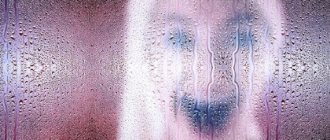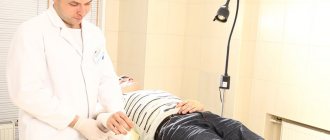Causes
Various factors can trigger the appearance of a lump. Even if the treatment was carried out successfully, a trace remains at the site of the boil. In this case, the method of carrying out the therapeutic intervention – surgically or medicinally – does not play any role.
Sometimes a lump forms at the site of the removed boil. The reasons for this may be: poor-quality wound cleansing, infection in the wound surface, or the presence of remnants of a purulent core deep in the wound.
If such a lump forms, you must consult a doctor again for further treatment.
The main reasons why a lump may appear:
- poor-quality cleansing after removing the pimple from purulent contents;
- infection to non-compliance with the rules during surgery or poor-quality treatment;
- the presence of a purulent core deep in the wound .
Which doctor should I contact with a boil?
Boil is a purulent inflammatory formation that affects hair follicles.
The formation of compactions can be facilitated by tissue growth, as a result of which the wound gradually heals. It is important not to neglect the specialist’s instructions.
This will prevent the development of multiple complications and negative consequences.
It is also worth remembering that if there is a red spot, swelling, painful sensations that are constantly getting worse, as well as if the arm is swollen or there is asymmetry of the face, the risk of developing another relapse increases.
The boil should be treated on an outpatient basis, contacting a doctor at the first sign of it.
It is not recommended to squeeze out or treat boils with external means on your own. If a lump forms after removing the boil, you should also consult a doctor.
Dermatovenerologist, cosmetologist
Zhikhoreva Inna Viktorovna
6 years experience
What to do if it doesn't work?
Of course, if the appearance of a lump after a boil is accompanied by a number of unpleasant sensations, you should not deal with this phenomenon on your own. After all, bacteria can easily spread through the bloodstream and cause serious complications, including blood poisoning. In such a situation, it is necessary to seek medical help as soon as possible.
If the lump does not cause any discomfort and is an accumulation of connective tissue, you can try to speed up its disappearance with the help of medicines and traditional medicine methods. You can also seek help from a dermatologist or cosmetologist (with medical education). A competent specialist will suggest the most effective methods of dealing with such a problem.
How to remove it with medications?
To help the lump resolve as quickly as possible, you can use special medications:
- Heparin ointment. This medicine contains heparin, which, when applied topically, affects coagulation processes, activates blood circulation, improves metabolism and stimulates healing processes. The drug is applied to previously cleansed skin treated with an antiseptic in a thin layer. It is better to lubricate with it only those areas of the epidermis that are located directly above the seal. The procedure can be repeated up to 3 times. in a day.
- Methyluracil ointment. This has anabolic and anti-catabolic properties, and also has a good anti-inflammatory effect. I recommend using methyluracil ointment to activate regeneration processes in wounds. It should be applied to the affected areas with a thin layer of 2 rubles. in a day.
- Gel with badyaga. This medicine contains an extract of special algae, it has a powerful anti-edematous effect and strengthens blood vessels. When applied topically, it perfectly activates blood circulation, stimulates regeneration processes, and helps resolve hematomas. To remove the subcutaneous seal after a boil, the gel should be applied to the skin in a thin layer shortly before resting at night. You should not repeat the procedure more than once. in a day.
- Retinoic ointment. This medicine contains isotretinoin (retinoid), which is capable of stabilizing the differentiated structures of the epidermis at the cellular level, as well as stopping the proliferation of epithelial structures and activating the regeneration of damaged tissues. Retinoic ointment should be applied directly to the problem area, without rubbing, 2 rubles. in a day. It is worth considering that using the product on exposed skin requires additional sun protection.
- Vishnevsky ointment. This is a complex medicine that has local irritant, antiseptic and reparative properties. To treat a lump under the skin remaining at the site of the boil, the drug should be applied to the problem area in a thin layer and covered with a bandage on top. This procedure should be repeated 2 times. in a day. It should be borne in mind that the medicine stains clothes and has an extremely unpleasant odor.
- Dimexide (dimethyl sulfoxide). This is a budget medicine that is sold in the form of a solution. It perfectly stimulates blood flow, activates tissue nutrition, helps dissolve blood clots and eliminate inflammation. To prepare the solution, you need to combine 3 parts of the drug with 7 parts of water. Soak a napkin or cotton swab in the resulting product and apply to the affected area for 30 minutes. Place polyethylene and a layer of clean cloth on top. Repeat the procedure 1 p. per day.
To choose the most effective remedy for treating lumps under the skin that have arisen at the site of treated boils, you should consult a dermatologist or cosmetologist. Before using any medicine, it is important to carefully study the instructions, especially the list of side effects and contraindications.
Folk remedies
To get rid of unattractive compaction of non-inflammatory origin, you can resort to various methods of traditional medicine:
- Combine 1 tsp. honey with 2 tsp. lemon juice. Apply the mixture to the skin for 30 minutes, then rinse it off with plain water.
- Combine equal parts of rubbing alcohol and water. Soak a cotton swab in the resulting solution and apply it to the affected area for half an hour, carefully securing the compress with a bandage.
- Combine equal parts of apple or table vinegar and plain water. Soak gauze or a cotton swab in the resulting solution and apply it to the swelling like a compress.
- Take 2 tbsp. l. dry sage herb and brew with 1 cup of boiling water. Leave the product covered for 2 hours, then strain. Use to prepare a compress for 30 minutes.
- Peel 1 onion and bake it in the oven (place in a preheated oven for 15 minutes). Cool the vegetable to a pleasant warm temperature, cut in half and apply the cut side to the seal. Fix this design and leave for 40 minutes.
It is worth considering that in the presence of a residual inflammatory process, all of the listed folk remedies are strictly contraindicated. In such a situation, they can do more harm than good.
Other treatments
Sometimes lumps under the skin do not want to disappear even with proper medicinal treatment. In this case, to remove them, the doctor may recommend more radical methods of surgery or cosmetology:
- Removal with a scalpel. The accumulation of connective tissue at the site of the boil can be excised during a classic operation. This method of disposal can be useful in the formation of large lumps that rise above the skin, compress nerve endings, and cause physical and aesthetic discomfort.
- Mesotherapy. This is a cosmetic procedure during which a specialist injects various active substances into the skin. They stimulate regeneration processes and can ensure resorption of the seal. The composition of the mixture for administration is selected individually.
- Dermabrasion or laser resurfacing. With such interventions, the upper layers of the skin are exfoliated, which stimulates regeneration processes. As a result, the bump may disappear or become less noticeable. It is worth noting that such methods of therapy are quite radical and are accompanied by a serious violation of the integrity of the epidermis.
- Physiotherapy methods. Sometimes a lump after injections can successfully resolve after several sessions of UHF (ultra-high frequency therapy) or IR (infrared coagulation).
Of course, the choice of treatment method for the compaction depends on the reasons for its formation, size and location. The doctor also takes into account the individual characteristics of the patient, in particular, the presence of concomitant health problems.
Wound healing
After opening the boil, a wound remains on the body, and if you carefully examine it, a hole from the purulent rod will be visually noticeable in it. Such damage requires close attention and proper treatment. As a rule, this requires:
- Rinse the wound thoroughly with an antiseptic. Usually Chlorhexidine, Miramistin or ordinary hydrogen peroxide are used for this purpose.
- Apply a bandage with antibacterial ointment. Levomekol is most often the drug of choice. It is based on the antibiotic chloramphenicol, as well as a substance with reparative properties, methyluracil. This medicine should be used until the wound is completely healed. As an alternative to Levomekol, doctors can also prescribe Erythromycin ointment.
In the future, the sore remaining on the skin can be lubricated with agents that activate regeneration processes. They prevent the appearance of rough scars and significantly speed up healing. The drugs of choice most often are Solcoseryl, Contractubex, Dermatix, etc.
It is worth considering that the opening of the boil should be carried out by a specialist - a surgeon. Only a doctor can properly treat the wound and prescribe appropriate treatment that will help prevent complications.
What to do
It is worth noting once again that even with high-quality treatment and complete removal of the boil, compaction will still be observed. After some time it goes away on its own. This is explained by the presence of a deep wound after the boil is removed.
The maximum that can remain is a small scar. Therefore, experts assure that there is no cause for concern, provided that the surgical intervention was carried out by an experienced specialist and all rules were followed during the removal process.
The situation is different with self-treatment. In this case, complications cannot be ruled out. It is important to remember that under no circumstances should you try to squeeze out a boil without a specialist. This can lead to the appearance of chronic furunculosis.
How to treat a boil
A dermatologist treats boils.
In addition, through the bloodstream, purulent contents can penetrate into the blood vessels of the brain. Against this background, purulent meningitis will begin to develop, which is very dangerous for human health and life.
To eliminate such a pathological phenomenon as a boil, it is recommended to contact only an experienced doctor.
Appearance mechanism
After the boil passes, connective tissue begins to fill the remaining wound. Inflammation decreases, swelling subsides. The tissue gradually fills the wound, and if everything is done correctly and infection is prevented, no seal remains. There will be a scar, but it can be corrected with cosmetics, physiotherapy, laser resurfacing, peeling and other means.
There is a possibility of furunculosis
It’s another matter when the surgeon’s excision of the abscess was carried out incorrectly and an infection was introduced. In this case, a large subcutaneous lump may form, which will require long-term treatment with antibiotics and possibly re-opening.
If the boils are not isolated and seals remain after them, then this is a sign of furunculosis. With this disease, multiple ulcers are observed, which may be at different stages of development. And after the boil resolves, others appear in its place or nearby.
Treatment
If a lump forms at the site of the removed boil, you must seek medical help. The specialist will conduct an examination and prescribe appropriate medications.
Self-medication is dangerous with complications!
Attention
Despite the fact that our articles are based on trusted sources and have been tested by practicing doctors, the same symptoms can be signs of different diseases, and the disease may not proceed according to the textbook.
Pros of seeing a doctor:
- Only a specialist will prescribe suitable medications.
- Recovery will be easier and faster.
- The doctor will monitor the course of the disease and help avoid complications.
find a doctor
Do not try to treat yourself - consult a specialist.
If there is no redness, swelling or increase in size, it is recommended to simply follow all the doctor’s instructions. This will not only eliminate the compaction, but also in some cases prevent the formation of a scar.
What measures to take?
After an abscess has resolved on its own or through surgery, it is natural for the area to remain a little sore and red. And if in the first days there is no dynamics in the direction of increased redness and increased pain, then the process of overgrowth and filling of the funnel from the purulent core with connective tissue is underway. The result of this process will be a reddish scar, the color of which will almost match the color of the skin over time.
It is advisable to consult a doctor immediately
If the lump turns into a lump that increases in size and becomes painful, the first thing to do is consult a doctor. This is a sign of infection, which can lead to serious consequences.
Lumps in the face and near the lymph nodes are especially dangerous. Through body fluids, the infection can spread to other organs, leading to inflammation of the lymph nodes, blockage of veins, meningitis and even blood poisoning, which can be fatal.
To combat compactions, which are sunken and protruding scars, various effective means are used today:
- "Mederma";
- "Curiosin";
- "Kontraktubes" and others.
At home, lemon juice and iodine have proven themselves to be effective in correcting scars.
Reasons for appearance
The reasons for the appearance of boils on the body in children are very different. Doctors identify several common causes of this pathology. In order for boils to occur in a child, the reasons may be as follows:
- metabolic disorders;
- endocrine disorders;
- frequent colds and ARVI;
- weakened immunity;
- malnutrition;
- violation of personal hygiene rules;
- lack of fresh air;
- overheating or hypothermia.
Doctors divide the causes into external and internal. External reasons include:
- untreated wounds or cuts on the body;
- dirt on hands and body;
- allergic reactions with rashes;
- clogged pores due to excessive sweating.
In order to avoid the appearance of boils for external reasons, it is enough to maintain hygiene and treat scratches in a timely manner.
The answer to the question of why a child has boils is more difficult to give if the reasons are internal. Internal reasons include:
- low hemoglobin level;
- frequent stress and problems with the nervous system;
- metabolic disorders;
- weakened immunity;
- frequent illnesses (for example, a boil on a child’s abdomen may appear after a serious illness);
- diseases of the endocrine system, in particular diabetes;
- mental or physical fatigue.
Boils can occur in a child, the causes of which are very different, and can occur at any time, regardless of the external temperature and time of year. Boils can also be caused by a lack of vitamins, skin damage from friction, diseases of the digestive system, and frequent hypothermia.
Experienced doctors at the Pediatric Department of JSC Medicine (academician Roitberg’s clinic) in Moscow will help you accurately determine the cause of the disease. Our clinic’s specialists use certified safe medications and effective technologies, which is one of the conditions for the complete recovery of young patients.











